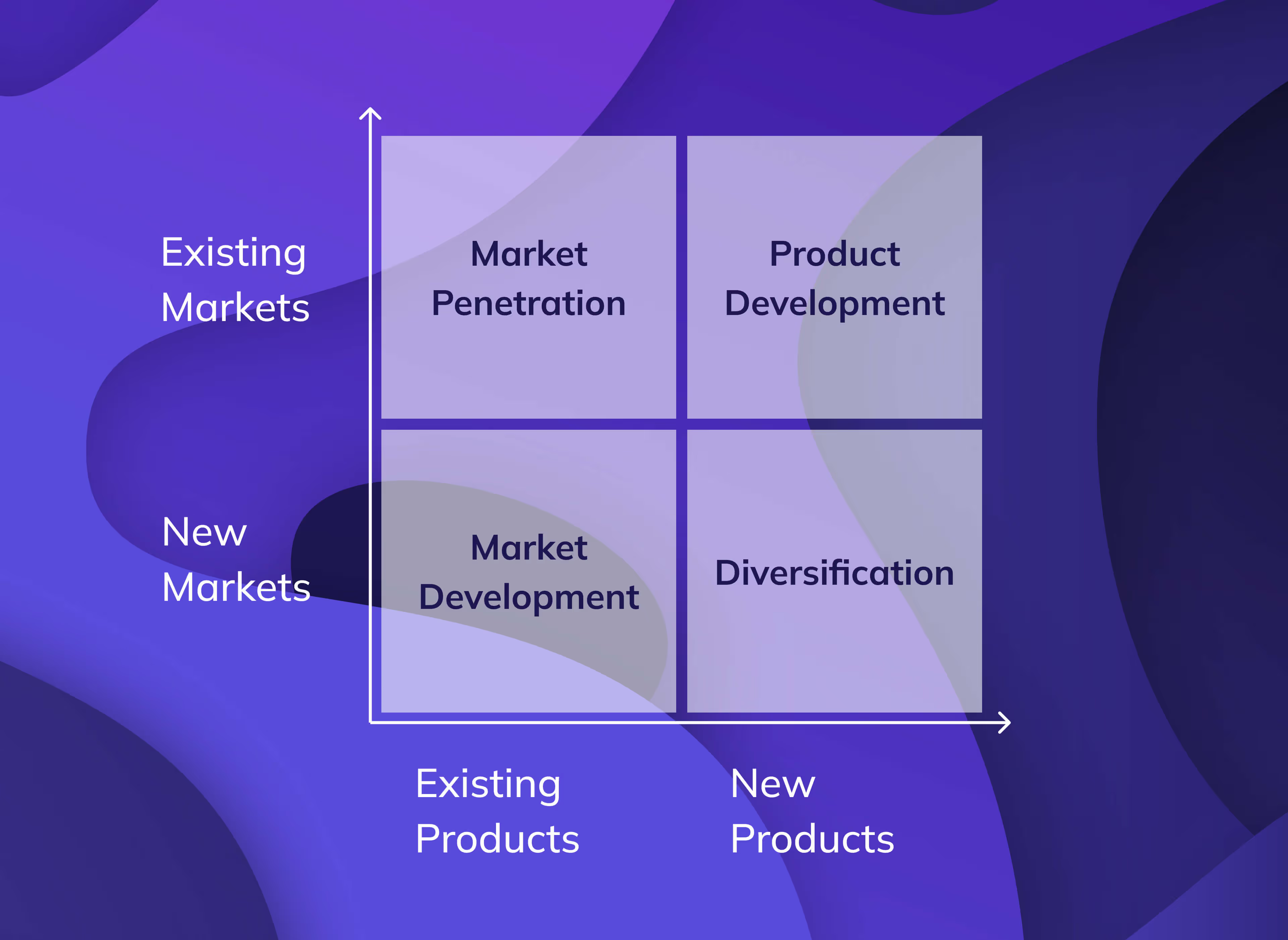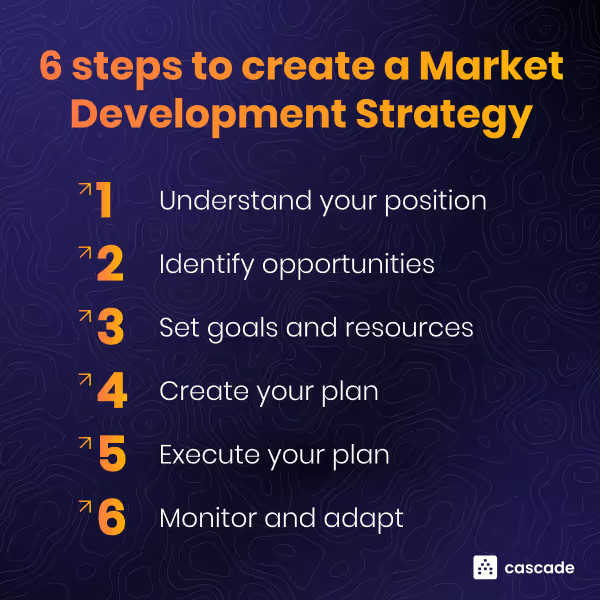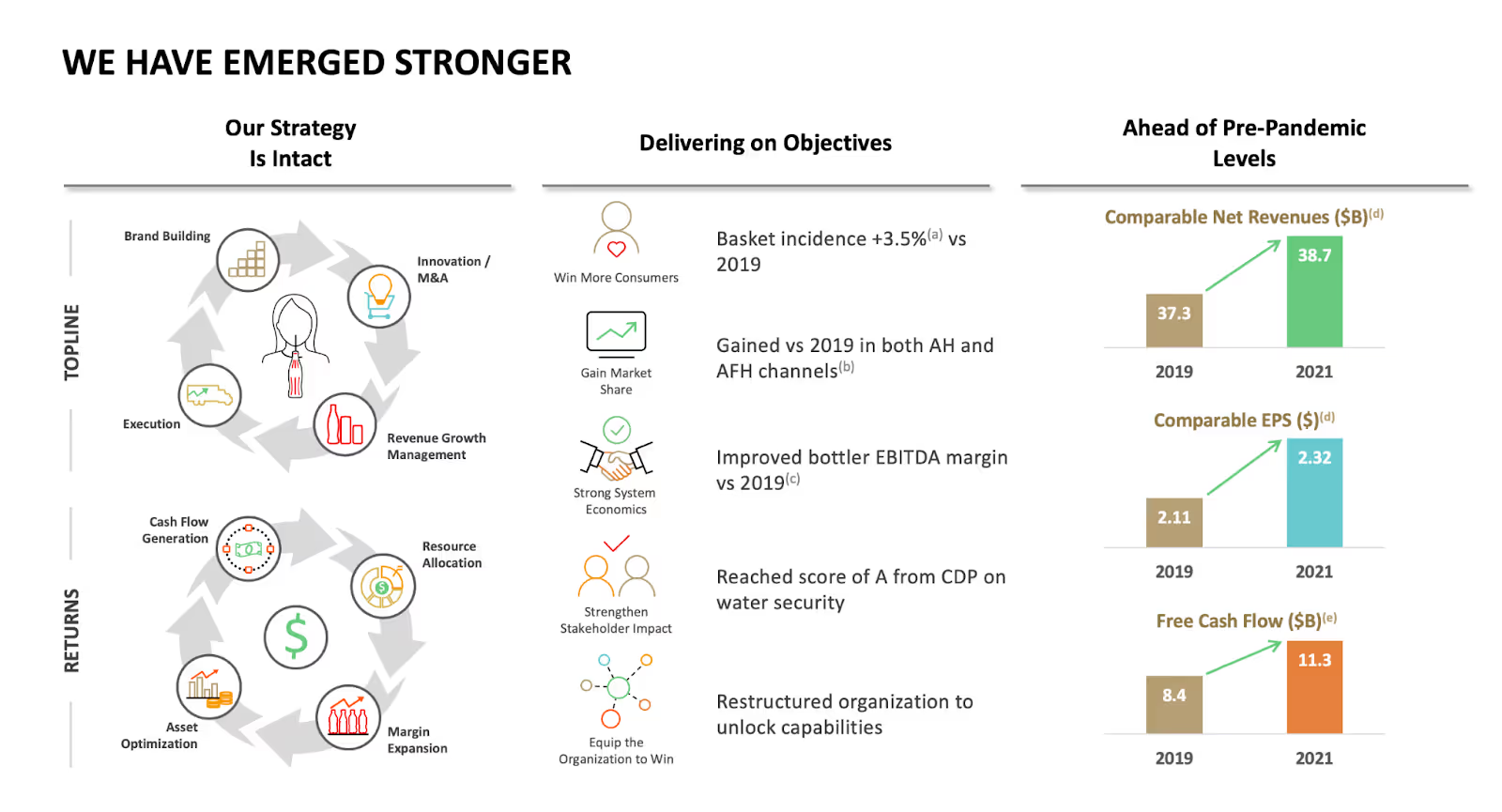Growing your business? Entering new markets is the key. But simply expanding your reach isn’t as simple as it sounds anymore. Fierce competition, picky consumers, and a volatile global landscape will challenge any company daring to expand.
Take consumer needs for example. They’re shifting at warp speed and companies have to adapt quickly if they want to stay relevant. However, Accenture’s The Human Paradox Report revealed that 88% of executives think that their customers are changing faster than their businesses can keep up. In contrast, 64% of consumers wish companies would respond faster to meet their changing needs.
This gap calls for a fresh approach when formulating and executing market development strategies.
In this article, we’ll show you how to navigate these challenges. We’ll walk you through six easy steps to build your market development strategy. Our goal is to help you develop a resilient and adaptable strategy to conquer new markets and drive business growth. Plus, you get a free template to help you create an execution-ready plan.
What Is A Market Development Strategy?
A market development strategy is a business growth strategy focused on the introduction of your products and services to new, untapped markets. It involves identifying new market segments and tailoring offerings to meet their unique needs, leveraging existing strengths to thrive in new territories.
While this strategy may look different depending on your business goals, your niche, and your industry, the overall goals and focus remain the same: market expansion.
As one of the 4 strategies in the Ansoff Matrix, a market development strategy provides a company with a robust framework to focus its efforts. Companies may also consider the other strategies in the matrix, depending on their business goals.

The 4 strategies in the Ansoff model are:
- Market Penetration Strategy: You focus your marketing efforts on sales of an existing product in a current market that you already have a stake in.
- Market Development Strategy: You market your current products to a different customer base or target market.
- Product Development Strategy: You market a new product line to a target audience that already loves your other products.
- Diversification Strategy: You introduce new products into a new market, targeting new users as your potential customers.
These strategies can help you get a competitive advantage, better meet customer needs, minimize undue risk, and capitalize on growth opportunities to meet your business growth goals.
Examples Of Market Development Strategies
Market development strategies are one of the safer approaches to market expansion since you already understand the product or service you’re trying to provide. There are several types of market development strategies you can consider:
- Geographic expansion: With this strategy, you target customers in new geographic locations with your existing products. For example, a company may expand from domestic markets to international ones.
- Penetration pricing: You adjust prices to target a specific customer segment or increase market share. For example, you might lower prices during a peak shopping period like the holiday season to attract more customers.
- Distribution channel development: You partner with other businesses to extend your product's reach, like promoting your products with businesses that your target market frequents.
- Tailored promotion: This involves using tailored marketing campaigns to reach new demographics. For example, a company might use social media ads or direct product marketing to reach younger audiences or specific interest groups.
- Rebranding or new branding: You create a new brand or change the messaging of a product line to appeal to new market segments, like creating a marketing plan that pivots your brand’s image to appeal to a younger audience.
A market development strategy can use one or more of these approaches. It all depends on what your market research uncovers about your target audience and how much market share you want to acquire with your expansion.
How To Create A Market Development Strategy: 6-Step Process

Follow these six steps to create an effective market development strategy:
Step 1: Understand your current market position
Before venturing into new markets, analyze where you stand in the existing market. Identify the unique aspects of your product that resonate with your current customers, as this insight will inform your strategy for entering new markets.
Understanding the strengths of your product will help you minimize marketing errors and optimize resource utilization across your initiatives.
Step 2: Identify market development opportunities
Once you've determined your product's readiness for a new market, identify prospective markets. Conduct thorough SWOT analysis and market segmentation research to pinpoint profitable markets with low risks.
This approach will help you focus on the most promising markets while avoiding the pitfalls of less viable options.
Step 3: Set goals and allocate resources
The next step is to prepare your business for the different stages and challenges that come with entering a new market. The best way to make sure you don’t get caught flat-footed is to set clear objectives and align them with your available resources.
A good framework to follow is the SMART goals (Specific, Measurable, Achievable, Relevant, and Time-Bound) since it helps you develop an actionable and realistic roadmap.
💡The Cascade model is another simple framework to consider. It helps you to build an execution-ready strategic plan with these crucial elements: focus areas, objectives, KPIs, and actions. Explore our strategy template library with over 1,000 templates, all built upon the foundation of the Cascade model.
Step 4: Create your plan
At this step, you shouldn’t neglect cross-functional collaboration among teams to create a market development plan. It’s not just about sketching a marketing plan to launch your new product or service; it’s about integrating various facets of your expansion, including critical logistics operations if you're venturing into new geographical terrains.
By synchronizing the efforts of diverse teams—from marketing to logistics—you ensure that all cogs in the wheel move in harmony. This cohesion is vital for devising a strategy that is both robust and adaptive, catering to the dynamic nature of market expansion.
👉How Cascade can help:
In Cascade’s workspace, cross-functional teams can simultaneously build multiple plans while tracking shared KPIs and aligning toward common goals. This not only brings transparency to the table but also eliminates duplicated efforts, ensuring everyone is rowing in the same direction.
What’s more, teams get full visibility into how their efforts contribute to shared objectives. This sense of visibility fosters a culture of ownership and accountability among the teams, further fueling the drive to achieve collective milestones.
💡Avoid spending too much time in the planning phase. Markets change fast, so your plan might be outdated by the time it's launched. Move into the execution phase quickly, monitor closely, and iterate as you go.
Step 5: Execute your plan
Once everything is in place, it’s time to act upon your market development strategy and execute your plans. Launching into a new market can be unpredictable, so ensure everyone can handle potential complications.
👉How Cascade can help:
With Cascade’s Relationships, you gain visibility into your organization's execution web by seeing how initiatives are connected and affect one another. You can prioritize critical initiatives, drop misaligned or duplicate projects, allocate resources to high-impact initiatives, and assign budget to maximize returns.

Step 6: Monitor and adapt your strategy
Even after launching your product, you must keep a close eye on its performance and adapt your strategy as needed. Regular monitoring and data collection are key to minimizing risks.
Be proactive and adaptive. Don’t just wait for the end of your launch to analyze outcomes. This will help you mitigate unexpected risks and seize unexpected opportunities that arise during your launch.
👉 How Cascade can help:
Cascade’s dashboards and reports will help you monitor and assess your plan’s progress in real-time.
.png)
And there’s more. Cascade integrates with your favorite project management, CRM, or BI tools, which means you can funnel data from various places into one central hub for automated collection and reporting. This centralized data empowers you and your stakeholders to make fast, data-driven, and confident decisions.
📚Recommended read: Centralized Business Observability To Boost Your Bottom Line
Benefits Of A Market Development Strategy
Having a plan will help increase your likelihood of success—even when faced with unforeseen situations. A well-thought-out strategy can drastically improve your performance and help set yourself up for the best possible outcome.
These are other benefits of having an effective market development strategy:
- Customization: By understanding the needs and preferences of a new market, you can tailor your product or service to provide a superior user experience, fostering brand loyalty among new customers.
- Differentiation: It helps your business to differentiate itself from competitors, potentially capturing their customers.
- Demand growth: Tapping into new markets can boost demand for your product or service, providing opportunities to increase your profit margins.
- Upselling opportunities: With a new, interested customer base, strategies like upselling become more viable, promoting increased sales revenue.
- Product refinement: By entering new markets, you can gather valuable feedback to refine your product or service, ensuring it fits the specific needs of different markets.
- Strategic alignment: Aligns with your company's overall vision for growth, promoting consistency and synergy across all business operations.
3 Famous Market Development Examples And Their Strategies
These companies successfully leveraged market development strategies to succeed in new markets.
Example #1: Nike

Footwear brand Nike has a long history of using market development strategies effectively, expanding to global markets with a variety of different approaches. From targeting specific market segments with personalized advertising to collaborating with major figures in sports for promotions, it’s a brand that understands that the best way to reach its audience is to make itself relatable.
This approach is nothing less than successful. Nike remains a key player in the world of sportswear and has been made the official partner of many professional sports events around the world. But more than that, it’s become a household name that’s associated with sports itself—an impression that continues to be felt around the world.
Example #2: Coca-Cola
Coca-Cola is one of the best examples of a company fully utilizing the advantages of market development strategies to tap new markets around the world. Using strategies like local marketing, diversification, and personalization, the company has managed to make its soft drink a blank slate that anyone in the world can relate to.

By considering the differences between markets and finding the common threads between them, Coca-Cola was able to market itself across several demographics with a simple yet clear impression of its brand. This has made the company yet another household name across the globe, all with a single base product that everyone can enjoy.
Example #3: McDonald’s

McDonald's has always used various growth strategies to ensure that its entry into any new market is as smooth as possible. By integrating itself with the local demographic, personalizing its products to meet local demand, and putting an emphasis on its crew, the fast-food giant has been a welcome sight in many countries around the world.
The company’s emphasis on adapting to its target audience undoubtedly makes transitions into new markets more effective and profitable—not to mention giving it a solid foundation for long-term growth. By aligning itself to what its new markets already see as familiar, McDonald’s can make itself an easily recognizable sight even in places that are drastically different from each other.
📚Find out more about McDonald's business growth in this strategy study.
Execute Your Market Development Strategy With Cascade 🚀
Market expansion requires strategic focus and agility. With Cascade, the world’s #1 strategy execution platform, you have the right tool to control your strategy and its execution.
Cascade helps you align metrics, initiatives, and resources, driving fast and informed decisions. It's not just about making plans— it's about executing them effectively.
Use Cascade’s robust features to root your market development strategy in data, and translate your goals into executable outcomes.
Sign up today for a free forever plan or book a guided 1:1 tour with a Cascade in-house strategy execution expert.
Market Development Strategy FAQs
What are the disadvantages of a market development strategy?
There are two significant risks to market development strategies: compliance and cost. Changing regulations in new markets can significantly affect or even stop market expansion, while not being able to gather enough capital makes expansion impossible altogether.
If these challenges aren’t addressed, the company not only risks losing significant resources; it may even negatively affect the brand’s impression in the eyes of its targeted audience.
What are the three key points of a market development strategy?
The three key points of a market development strategy are:
- Understanding your product’s strengths.
- Marketing your product to your targeted market.
- Differentiating your product from your competitors.
By meeting all these three points, your company is far more likely to achieve success with its market expansion, as well as establish itself with your new audience.






.png)
.jpg)
.jpg)
%20(1)%20(1)%20(1)%20(1)%20(1).png)



